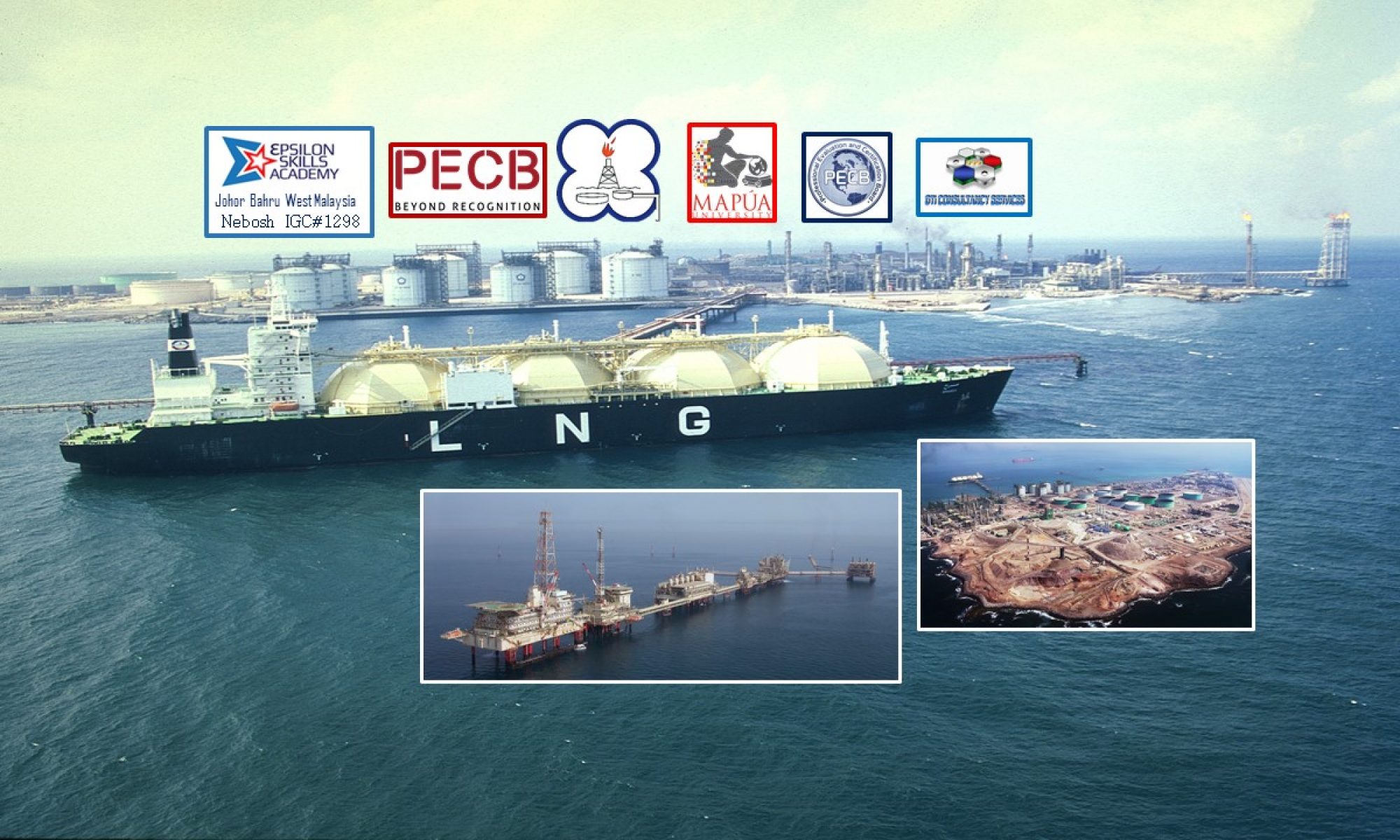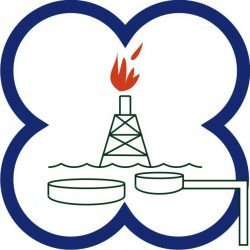O3GHSE O&G Training Center, Philippines
SYLLABUS IDOHSE OGI INTERNATIONAL DIPLOMA
THE DIPLOMA TRAINING COURSE VIA ZOOM
We are proud to announce that our International Diploma in Occupational Health, Safety and Environment in the Oil & Gas Industry is accepted by the Saudi Council of Engineers, Kingdom of Saudi Arabia 🇸🇦.
الهيئة السعودية للمهندسين
Such is a requirement to renew the iqama of HSE /Safety workers to practice their profession in the kingdom.
***********************************
2023 to 2024
ONGOING ENROLLMENT every month
***********************************
In compliance with the Saudi Council of Engineers ( الهيئة السعودية للمهندسين) under the supervision of Ministry of Commerce and Investment, a professional body intended to promote the engineering profession, develop, and upgrade its standards as well as its practitioners.
O3GHSE O&G offers International Diploma in Occupational Health, Safety and Environment for Oil and Gas Industry, in short IDOHSE OGI
(Mostly OSHA-USA based though not limited.)
SYLLABUS IDOHSE OGI INTERNATIONAL DIPLOMA
[Exclusively Designed By O3GHSE O&G Engineers]
Regular Schedule :
ONE (1) YEAR DIPLOMA COURSE
Start: Monthly
Days: Monday to Friday
Timing : 2 PM TO 7 PM, Philippines
Venue : O3GHSE O&G ONLINE CLASSES VIA ZOOM
IDOHSE OGI DIPLOMA is valid only in the Middle East.
FIRST MONTH
1. Natural Gases and Its Properties
2. The Natural Gas Constituents
3. Oil and Gas Reserves, Demand and Produced
4. GOSP & CDS Production Operation
5. Toxic, Poisonous and Inert Gases in the O&G Process
Part 2
6. Organic and Inorganic Theories
7. Study of Gas field: Asia and Middle East
8. The Gas Network
9. The Business Interface: One Million Barrels Production
10. Production Operations Overview
Part 3
11. Crude Stabilization
12. The Oil and Gas Separators, 2-phase and 3-phase & Demister Pad
13. Chemical Used in the Oil and Gas Separators
14. Automatic Ignition Temperatures and Flashpoints
15. Static Energy
Part 4
16. Gas Testing in the Plant and Confined Spaces
17. Techniques in Working In Flammable Atmosphere
18. Radionuclides in the Oil and Gas Industry, NORM-LSA & TENORM
19. Boiling Point of Gases and Hydrocarbon Dew pointing
20. The Condensates
Part 5
21. Ergonomics in the Oil and Gas Installation, Offshore & Onshore
22. Hot Work Welding Booth (Safehouse Habitat, Fire blankets)
23. Scaffolding and Ladder Safety
24. Permissible Exposure Limits (PPM) vs. Flammability Ranges (%)
25. International Regulatory Standards in the Oil & Gas Industry
Part 6
26. Clean Air Acts, EPA and NAAQS
27. Hazards of Benzene
28. The Hydrogen Sulfide: By-product and Reaction
29. SCABA and EEBD/ELSA, Standard Computation of Air as per NFPA
30. Hydrogen Sulfide, Ferrous Sulfide, and Hydrogen Cracking (SOHIC, HIC)
Part 7
31. How To Handle Pyrophoric Scales
32. The Gas Flare, Part 1; Purpose and By-products Gases
33. The Liquid Flare & Safety, Part 2
34. Different Catalysts/Desiccants: Solid and Liquid
35. Nucleonic Level Indicator Safety
Part 8
36. Safety in the Office
37. Ergonomics and Safety on Wellhead Bays/Towers
38. Air Composition and Noble Gases
39. Industrial Cylinder Management, Color Coding and Safety
40. Slug Catchers: COP 3 & COP 21 Paris Agreement
Part 9
41. Temperature and Pressure Swing Adsorption Study (TSA & PSA)
42. Logarithmic Computation of Noise as per OSHA
43. Selecting Ear Defenders
44. Importance of MSDS
45. The API of Oil: Types of Crude
Part 10
46. Power Source Requirement in the Oil and Gas Industry
47. Heat Insulation: Hazards and Substitutes
48. Heat Exchangers
49. Remote Degassing Stations And Remote Manifold Stations
50. Explosion Proof and Intrinsically Safe
Part 11
51. Triangle of Fire and Tetrahedron of Fire
52. Chalwyn Valve, Flashback Arrestor & Flame Arrestor
53. ISO 45001 OHSMS and Important ISOs in O&G
54. The Gas Gathering Process Safety
55. Causes of Hydrates Formation
Part 12
56. Gas Injection in the Oilfield
57. Gas Blanketing on Vessels
58. Cooling Water in the Gas Processing
59. First Stage Suction Drum
60. Anti-Freeze Agents in Process Safety
61. Glycol/Water Separator, TSA
62. Methanol Injection
63. Slop Tanks (Open and Closed)
64. Condensate Stripper in the Gas Gathering Platform
65. Sweetening Process: Oil and Gas Terminal
SECOND SEMESTER
Part 14
66. The Spherical Tanks and Safety
67. H2S Strippers
68. The Fossil fuels: Crude Oil and Natural Gas, Orimulsion, Definition & Origin
69. Oil Window and Natural Gas Temperature
70. Vertical and Horizontal Drilling
Part 15
71. The Power Generation Platform and COP 21
72. The Water Injection Platform
73. The Deaerator
74. Electro-Chlorinator, Sodium Hypochlorite, Hydrogen Gas and Montreal Protocol
75. Primary, Secondary & Enhanced Recoveries
Part 16
76. Network of Oil & Gas Fields with Platform Installations
77. Study of Cryogenic Temperatures and its Hazards
78. The LNG Process and HSE
79. The NGL Plant Process
80. Natural Gas: Differences of Upstream, Midstream and Downstream Industry
Part 17
81. Materials Used in Cryogenic Towers, Cryogenic Tanks and Pipelines
82. LNG TANKS: API 620 (2013) and BS 7777-4: 1993
83. The Cryogenic Tower
84. Inside Cryogenic Tower and Insulation Materials
85. LNG Ship, Q-Max: Gas Computation for Engineers
Part 18
86. LNG Tanks and Materials
87. LNG Spillage on Water
88. Oil Spill Booms and Dispersants
89. The Benfield Hi-Pure Process
90. The Gas Liquefaction Plant and Oil Terminal Virtual Tour
Part 19
91. Carbonate Absorber Tower
92. DEA Absorber Tower, Amine Gas Treating
93. Fan Coolers /Fin Fan Coolers
94. Gas Dehydration
95. Mercury Removal Unit, Catalysts
Part 20
96. Role of Liquid Propane in LNG Plant
97 Mixed Component Refrigerant
98. Aluminum Magnesium
99. Amalgamation
100. The Demethanizer
Part 21
101. Floating Roof and RVP
102. Oil Spill in the O&G Platform Installation
103. Basic Pigging and Safety
104. Reflux Drums
105. Marsh Gas and Thermogenic
Part 22
106. Fractionation Towers
107. Chillers and Cold Box
108. Sour & Sweet Gas Flares
109. Re-boilers & Reflux Drums
110. Insulations for Cryogenic Temperatures
Part 23
111. Return Vapor Quench Drum
112. LNG Process Flow: LNG Plant to End Users
113. Sulphur Recovery, Claus process and HSE
114. Catalytic Reactors and Sulphur Pit: Cleaning Safety Procedures
115. The Sulphur Condenser, The Incinerator and Tail Gas
Part 24
116. Hydrogen Management in the Oil and Gas Installation
117. Confined Space as per OSHA
118. H2S Stripper in the Crude Oil Terminal
119. Propane gas and Propane Accumulator
120. Permit To Work, PTW (Middle East and International Practice)
Part 25
121. The Ozone Depletion and Recovery, The Kigali Accord
122. Climate Change, Global Warming and Paris Climate
123. Floating Roof, RVP and Ground Level Ozone
124. Engineering Techniques in Reducing Carbon Emissions as per COPs
125. Tropospheric Ozone and Corresponding Protocol
O3GHSE O&G Training Center is the official Oil And Gas training partner of Mapúa University and Canada’s Professional Evaluation and Certification Board (PECB).
Trusted by Riyadh Polytechnic Institute (Laureate International Universities), Saudi Arabia, Mapua University, formerly Mapua Inst. of Technology, Talisman Energy Inc. (Canada) JV with Petronas

